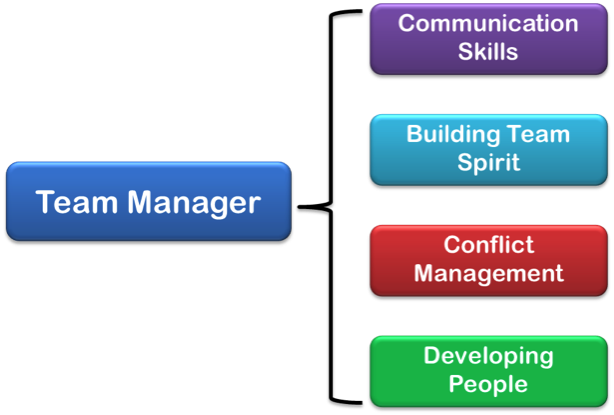
The Performance Difference is a show featuring companies interested in achieving their business goals by building employee growth in specific skills based on the company’s business drivers. Our podcast highlights companies’ success strategies for hiring the right people and building employee growth.We feature a group of professionals focused on recruiting, retaining and improving employees. These include Human Resources professionals, managers of recruiting firms and human development personnel. We’ll discuss which strategies are working (and which aren’t), and trends in the industry. Some of our podcast titles include:
The Essence of Leadership
Civility in the Workplace
Interactive Learning Platforms
Click here to download shows on iTunes. We would love reviews on the podcasts you listen to.
If you would like to be a guest on the show, please click here. Provide your name, company, contact info, and the topic you want to discuss.
Most businesses have a leadership pipeline that aspiring managers move through during the course of their careers. The exact titles and responsibilities may vary depending on the industry, but they generally follow the path illustrated in the Leadership Pipeline figure. Employee development is frequently based on this career path.
 First transition: From Managing Self to Managing Others. Employees just starting out usually spend their first few years in an organization as individual contributors. They contribute by doing the assigned work within given time frames and meeting objectives. When individual contributors demonstrate that they can produce effective results and collaborate well with others, they receive additional responsibilities. If they show they can handle the responsibilities and uphold the company’s values, they may be promoted to first-line manager positions. This is where they start the transition from accomplishing tasks to managing others.
First transition: From Managing Self to Managing Others. Employees just starting out usually spend their first few years in an organization as individual contributors. They contribute by doing the assigned work within given time frames and meeting objectives. When individual contributors demonstrate that they can produce effective results and collaborate well with others, they receive additional responsibilities. If they show they can handle the responsibilities and uphold the company’s values, they may be promoted to first-line manager positions. This is where they start the transition from accomplishing tasks to managing others.
Second Transition: From Managing Others to Managing Managers. This is a critical juncture because these level-two managers select and develop the people who will become the company’s future leaders. At this level, managers must be able to recognize that some individual contributors are not cut out to manage and lead others—and to find a way to continue development for them.
Third Transition: From Managing Managers to Managing Functions. At this point, managers need to learn new communication skills because to communicate with individual contributors, they must now go through at least two layers of management. They also report to general managers who manage multiple functions. They may need to learn about areas unfamiliar to them and think about aligning their unit’s strategy with the business’s overall strategy. They will spend more time working with other functional managers in business-team meetings and less time on purely functional responsibilities.
Fourth Transition: From Managing Functions to Managing Business. Business managers are responsible for the bottom line. They usually have significant autonomy and see a clear link between their efforts and bottom-line results. At this level, managers must learn to reserve time to reflect and analyze, because they must balance short- and long-term thinking.
Fifth Transition: From Business Managing to Group Managing. A business manager values the success of his own business; a group manager values the success of other people’s businesses. A leader at this level must have a global perspective. They must prepare themselves for the bigger decisions, greater risks and uncertainties, and the longer time spans inherent to this leadership level.
Sixth Transition: From Group Managing to Enterprise Managing. This transition is much more focused on values than skills. Enterprise managers must set direction and develop operating mechanisms to know and drive quarter-by-quarter performance that is in tune with longer-term strategy. Enterprise leaders must let go of the pieces, i.e., the individual products and customers, and focus on the whole, i.e., how well do we conceive, develop, produce and market all products to all customers. This role is commonly titled CEO.
What happens if you can’t promote employee? There may be several reasons promotions aren’t an option:
Isolated roles – Highly specialized, support, or remote roles may be difficult to promote.
Hiring and wage freezes – You may not have budget or growth opportunities readily available.
Employees working longer – Rising retirement age, financial constraints, and personal preferences are keeping employees on the job longer, which prevents higher-level positions from becoming available.
Narrowing Hierarchies – It’s a simple numbers game; organization charts narrow to the top like a pyramid. Even if your company is growing, generally only one or two out of every ten people can become managers.
Also consider that many individual contributors are happy in that role and have no desire to manager others. That doesn’t mean they don’t want to grow in their careers. If management is the only path to promotion and raises, you’ll either get the wrong person in the wrong role or you’ll lose valuable employees. You need to find ways to offer employee development when promotions are off the table. Here are three suggestions to get your thoughts flowing.
1 – Consider Lateral Moves
A change in responsibility or role can be just as motivating and refreshing as a promotion. When someone on your team starts to look restless or bored, talk to them about other areas of the business they’re interested in. Maybe they’d like to cross-train with other team members, which would provide growth opportunity to others and foster teamwork as they train each other.
2 – Focus on Skill Growth
Take a look at each team member’s skills. See if there are areas you can work with them to improve. Identify new skills they’d like to learn that could be tied to future opportunities or passion areas. If you don’t have much of a training budget, get creative! Books are relatively cheap. A mentor further along in a similar career could provide guidance and advice. Learning from a peer skilled in the team member’s area of interest could have a big impact. Look for affordable professional meet-ups or conferences they can attend. Free and inexpensive courses from respected institutions like Harvard, MIT, and Sorbonne Universities are available online from sites like EdX and Udemy.
3- Tap into Their Passion
As companies and teams grow, habits and processes can become outdated. Maybe it was the best you could do at the time, but now employees are complaining about them. The next time somebody complains about a broken process or inefficient system, ask if they’d consider taking it on as a project. This feeds their passion because if they care enough to complain, they’re likely motivated enough to fix it. If it works and you can measure the results, it creates a success story to enhance their resume for the future. Fixing a daily hassle provides stress relief for the employee and maybe even the whole team—happier employees are easier to work with!
Passion projects tap into the three keys to motivating employees intrinsically: autonomy, mastery, and purpose:
- Autonomy – They’re in charge of the project, leading to goals you agree on.
- Mastery – They’re building skills by taking on the project.
- Purpose – The project helps them, their team, and the company in a measurable way.
A sense of accomplishment is invaluable to a fulfilled, loyal workforce. Don’t let a lack of opportunities for promotions prevent you from investing in employee development. Get creative and find ways to boost morale, motivation, and employee retention.
To find out more about how to create custom employee development plans, browse the website www.theperformancedifference.com, or email me at laurie@theperformancedifference.com.
 Sounds perfect, right? Not so fast. Like many things in life, just because we CAN do something doesn’t mean we SHOULD. Last week we talked about the essential traits entrepreneurs need. This week we’ll look at four things that indicate entrepreneurship isn’t for you.
Sounds perfect, right? Not so fast. Like many things in life, just because we CAN do something doesn’t mean we SHOULD. Last week we talked about the essential traits entrepreneurs need. This week we’ll look at four things that indicate entrepreneurship isn’t for you.
Not a risk-taker. As you might guess, being willing to take risks is essential to successful entrepreneurship. What you might not know is that you have to balance it with a healthy respect for the potential drawbacks, problems and obstacles. Stories you hear often focuses on the “full speed ahead” entrepreneurial mindset, but you have to be able and willing to do the less-exciting due diligence to increase the odds for success. It’s a fine line to walk. Being too impulsive, not doing thorough prep work, risks your chances of success. On the other hand, concentrating too much on potential problems can consume too much time, causing you to miss opportunities. And, as you know, if you are completely risk-averse, entrepreneurship is not for you.
Can’t balance creativity AND perseverance. You may have a great idea—or several—but if you lose focus and get bored, you won’t be successful. Many creative people fall into this category. They have one idea right after another, but fail to stick it out and bring them to completion. You need to balance creative ideas with sticking to seeing them through to be a successful entrepreneur.
 Doesn’t play well with others. The images of creative geniuses we see in the media often appear to be driven, hyper-focused, and completely self-motivated. If they have team support, everyone seems to forgive them their lack of basic people skills. I always think of Sheldon on the popular sitcom, The Big Bang Theory. He might be fun to watch, but I suspect Sheldon in the real world would be a very lonely person. In reality, entrepreneurs need to be able to effectively interact with others, build motivated and high-performing teams, negotiate win-win solutions to conflict, and inspire others to achieve goals. Entrepreneurs need both strong, focused ambition and team-building people skills to be successful.
Doesn’t play well with others. The images of creative geniuses we see in the media often appear to be driven, hyper-focused, and completely self-motivated. If they have team support, everyone seems to forgive them their lack of basic people skills. I always think of Sheldon on the popular sitcom, The Big Bang Theory. He might be fun to watch, but I suspect Sheldon in the real world would be a very lonely person. In reality, entrepreneurs need to be able to effectively interact with others, build motivated and high-performing teams, negotiate win-win solutions to conflict, and inspire others to achieve goals. Entrepreneurs need both strong, focused ambition and team-building people skills to be successful.
Blind to success-hindering tendencies. Often, people don’t realize that they have traits that could hamper success. Some of them include defensiveness, bluntness, impulsiveness, authoritarianism, and close-mindedness. Research has shown these traits to prevent success if they are extreme. Using an assessment tool can give an objective view of any tendencies that hopeful entrepreneurs might need to work on.
While these indicators can give you an idea of whether you’re entrepreneur material, nothing is a deal breaker if you’re willing to work on areas where you may fall short. Remember that we are all capable of change, if the pay-off is great enough. Change starts with knowing what we need to work on, deciding if we want to do it, and getting started with a plan to make the changes.
To find out more about traits that can make or break entrepreneurs, email me at laurie@theperformancedifference.com to discuss how you can find out about the traits you need to succeed.
 Entrepreneurship is on the rise. A report from the Kauffman Index of Startup Activity shows that 550,000 Americans launch new businesses each month. More people are starting new businesses for both cultural and economic reasons.
Entrepreneurship is on the rise. A report from the Kauffman Index of Startup Activity shows that 550,000 Americans launch new businesses each month. More people are starting new businesses for both cultural and economic reasons.
Although it may sound ideal, we know that not everyone who thinks they should strike out on their own is actually cut out to do it. How often have you daydreamed about being your own boss? I think it’s fair to say that most of us have imagined it at some point. But with 33% of new businesses failing in the first five years, how do you know if you’re entrepreneur material? Fortunately, advanced assessments can provide insights into the required traits for success. Harrison Assessments has studied success for 25 years, identifying the traits needed to succeed as well as factors that could be stumbling blocks.
Checklist
Here’s a list of the essential traits entrepreneurs need.
Authoritative
Harrison Assessments (HA) defines authoritative as the desire for decision-making authority and the willingness to accept decision-making responsibility. This is so crucial that HA ranks it as “very essential, 80% of the time.”
Takes Initiative
This means the ability to understand what must be accomplished and to proceed to do it on your own. You never have to be told what needs to be done.
Wants Autonomy
This one is defined as, “the desire to have freedom or independence from authority.” In other words, to be your own boss.
Wants Challenge
If you’re not willing to tackle difficult tasks or goals, entrepreneurship is definitely not for you.
Enthusiastic
If you’re not excited about your goals and eager to tackle the steps to achieve them, you’ll burn out before you succeed. You have to be able to be your own cheerleader when things get tough.
Influencing
It’s essential that you can try to persuade others in several areas, such as sharing your vision and getting excited about it. You’ll want to build a system of people who support and care about your success. Otherwise, it’s doubtful you’ll make it in the long haul.
Planning
You have to be able to envision the steps to accomplishing an objective, and formulate a plan for achieving success. Remember, failing to plan is planning to fail!
Analytical
This trait involves the tendency to logically examine facts and situations. If you don’t have the ability, you have to find someone who does. Analysis is essential to strategic planning.
Analyzes Pitfalls
This means you can imagine and examine potential difficulties in a plan or strategy. If you’re the person who always sees the potential downside of a proposed action, you’ve got this one covered.
Persistent
Your stick-to-it ability will be tested to the breaking point as an entrepreneur. If you can’t commit to overcoming significant obstacles, maybe this isn’t the best fit for you.
Do these traits sound familiar? If they describe you, you may have what it takes to be a successful entrepreneur. Next week, we’ll talk about the six tendencies that indicate entrepreneurship is not for you.
To find out more about traits that can make or break entrepreneurs, visit www.theperformancedifference.com, or email me at laurie@theperformancedifference.com to discuss how you can find out about the traits you need to succeed.
 Back in the 1990s, Warren Bennis authored a book about managing people in the 21st century titled Managing People is Like Herding Cats. It’s a great title because of the image it invokes—people running around like cats, refusing to be herded. Every manager has most likely felt that their team behaved this way at some point.
Back in the 1990s, Warren Bennis authored a book about managing people in the 21st century titled Managing People is Like Herding Cats. It’s a great title because of the image it invokes—people running around like cats, refusing to be herded. Every manager has most likely felt that their team behaved this way at some point.
When you’re newly promoted to management, you probably feel excited about your new role, ready to jump in and get things done, and—let’s be honest—happy to daydream about how you’ll spend that extra income. And while we’re being honest, you likely feel a little apprehensive, if not downright terrified. Even if you’re confident and ready to take on the challenge of managing other people, these questions may occur to you:
- Can I make hard decisions about goals and priorities?
- Can I say “no” to projects that don’t advance these goals?
- Can I represent the company even if you disagree with a decision?
- Can I effectively exercise authority over others, especially people older or more experienced than me?
As scary as it may be, there are steps you can take to get more comfortable with your new role managing people. Here’s a list of suggestions to help you hit the ground running and do your best from the very beginning.
1. Learn Everything You Can
Look for all the management tools, resources, and classes your company offers. Some companies have extensive training materials. Nearly all have manuals and HR policies. Read and learn from them. Keep a copy on your computer or bookshelf.
Also, take the time to learn about the people you’ll be managing. Review their personnel files, resumes, and past performance reviews. Then make the time to get to know them through face-to-face interaction.
2. Change Your Perspective
“Before you were a manager, your number one job was to accomplish tasks,” says Penelope Trunk in 4 Worst Mistakes of a First Time Manager. “Now, your number one job is to help other people accomplish the tasks in an outstanding way.”
As a manager, your performance is tied to your team’s performance. If they fail, you fail. Your job is to help them succeed by providing motivation and removing obstacles.
3. Listen First, Act Second
Often, new managers are eager to big changes right away to show that they’re competent and in charge. However, this can backfire if you don’t take the time to completely understand your organization and team.
Set up individual get-acquainted meetings with your new staff members. Ask what they like about their jobs, what their biggest challenges are, and what ideas they have for improving the organization. You won’t be able to use everyone’s ideas and make everybody happy. However, saying something as simple as, “I’d like your input while I consider plans for the future,” will go a long way toward building positive relationships.
4. Manage Relationship Changes
You got a promotion and now you’re supervising someone who used to be your work BFF. No more one-on-one happy hours and lunches that would cause distrust and resentment from the rest of the team. Remember that your former peer may be happy for you but also feel jealous or left behind.
As awkward as it may be, the best course of action is to address the changes in your relationship head-on. Try starting the conversation with, “You know that I value our friendship, but as a manager, I need to make sure that everyone on the team views me as being fair and consistent, so our work relationship is going to change,” suggests Adrian Granzella Larssen, editor-in-chief of The Daily Muse.
5. Make Your Boss Look Good
Now that you’re reporting for a group, it’s important to make sure the goals you set for your team align with your supervisor’s priorities. Set up regular meetings to discuss your team’s goals, progress, and issues.
Consistent communication also helps establish a positive relationship with your boss. You’ll need to learn how to handle sticky employee challenges that aren’t covered by a manual. What if you have someone who is a great performer, but you can’t promote him because there isn’t a position available? A coach or mentor can help you figure out a way to reward and keep the employee. If your boss can’t or won’t fill this role, find someone else in the company who will.
Being a good manager is an ongoing process. Even after the initial learning curve, you’ll continue to find new challenges along the way. Do your homework, focus on your new role, and form good relationships, and you’ll be a successful manager.
Want to know more about the skills required to be a good manager? Email me at laurie@theperformancedifference.com to discuss how you can find out about the traits you need to succeed.
 At some point, most employers have to hire a new employee. Positions become vacant for many reasons. People retire, move away, get promoted—life happens. If you’re losing employees at an alarming rate, you’ll want to investigate the root causes before doing more hiring. But even the most run-of-the-mill, no-fault need to hire new people can make hiring managers anxious (see 5 Ways To Avoid Hiring Disasters).
At some point, most employers have to hire a new employee. Positions become vacant for many reasons. People retire, move away, get promoted—life happens. If you’re losing employees at an alarming rate, you’ll want to investigate the root causes before doing more hiring. But even the most run-of-the-mill, no-fault need to hire new people can make hiring managers anxious (see 5 Ways To Avoid Hiring Disasters).
We know that the best employees not only have the skills you need or the ability to learn them, they’re also a good fit for your business. So how do you find that seemingly magical creature in a sea of applications?
Tip 1
Create a profile. It’s difficult to hit a target you can’t see. If you don’t know what makes an employee successful in your company, how can
you hire someone who will fit the bill?
Survey your current high-performing employees about their interests, hobbies, experiences, and accomplishments. [Bonus tip: Tell employees that by sharing this information, they can help create a productive workplace. Maybe you can offer a small incentive for everyone who completes the survey.] Develop a list of the following characteristics:
- Traits
- Attitudes
- Life experiences
The idea isn’t to use this information to create a cookie-cutter employee profile that allows no room for differences. In fact, it can show where differences will strengthen your team. Instead, use this information to recognize the characteristics common to your most successful employees.
Tip 2
Enlist the help of current employees. Let employees know that you want them to always be on the lookout for good people who might
add value to your organization. Your employees probably know other people working in the same field and will most likely only recommend
friends or acquaintances who will be solid performers. In addition, your current staff will likely give potential candidates an honest assessment of what it is like working there. That helps weed out the people who might not be a good fit before you put the time and effort into the interviewing process. You might even consider offering a referral bonus—cash or other gift meaningful to the referring employee. To make sure you’re getting quality referrals and not just numbers, offer the bonus in increments – some at the time of hire, some after the new employee has been there six months, and the rest after the new employee reaches one year.
Tip 3
Encourage employee development. Employees want a job that has purpose and provides growth opportunities. A chance to develop professionally is a great selling point to get the right new hires excited about your job. Show them that you believe in their potential and want to help them succeed from the very beginning with a development plan included in your onboarding process. Provide mentoring, coaching, and chances to learn new skills. A great way to accomplish this is by having regular meetings with employees to set and monitor development goals (see “Coaching vs. Annual Reviews”).
These three tips should help you feel more confident in attracting your ideal employee. If you’d like more information about making sure your new hires are winners, contact me at laurie@theperformancedifference.com.
 One of the most important tasks any business leader has is hiring. It’s a time-consuming process that has far-reaching effects. A bad hire can negatively impact both your budget and your reputation. Do it well, and you’ll be a hero.
One of the most important tasks any business leader has is hiring. It’s a time-consuming process that has far-reaching effects. A bad hire can negatively impact both your budget and your reputation. Do it well, and you’ll be a hero.
The right person has the right skills and experience, but that’s not all. In addition to being technically capable, the right person is also a good fit for the company.
We’ve all heard hiring horror stories—maybe you even have one or two of your own. Companies that are successful in hiring have a process that includes attracting high-quality candidates, evaluating them in several different areas, and taking the time to get to know the people. Here are five tips to improve your hiring process.
Tip 1
Better job descriptions. It starts with an extensive job analysis. Use the information to create both job specifications, which include the required technical capabilities, and candidate specifications, which identify traits a candidate needs to be successful in the role.
Avoid job posts that are just laundry lists of every possible skill and trait a “perfect” candidate should have. Studies have shown that high-potential candidates respond more often to job postings that focus on what the company can do for its employees. Statements like, “We provide constructive feedback to support career growth,” and “You’ll frequently have the opportunity to collaborate with talented colleagues,” will attract great candidates.
Tip 2
Embrace technology. Most people want to work for companies that keep up with tech trends. A good start is making sure your career site is
mobile-friendly. According to a 2015 Pew Research survey, nearly 30 percent of American adults have used their smartphone in some way for their job search, including browsing job listings (94 percent of smartphone job seekers), filling out online job applications (50 percent) and creating a resume or cover letter (23 percent).
Tip 3
Pay attention to soft skills. It might seem that the right skill set is the most important factor in whether a candidate is the best fit for a role. The truth is that skills can be learned, but personal traits cannot. Interpersonal skills, communication skills, thought processes and emotional intelligence matter—and may be even more important than skills in job success. Some of the most profitable companies hire attitude and teach skills.
Tip 4
Improve your interviews. Most hiring managers are not trained in good interviewing techniques. They are often too pressed for time, too focused on other issues, and too insecure in their interviewing skills to notice red flags candidates exhibit in the interview process. They often default to evaluating technical competence and ignore factors like coachability, emotional intelligence, temperament and motivation that are equally important. To counteract this, train interviewers in good questioning techniques. Most interviewers don’t go through the interviewing process often enough to feel comfortable with it. Providing short interview skill refresher courses and quick reference job aids can help interviewers feel more confident.
An often-overlooked aspect of interviewing candidates is letting the candidates interview you, too. Their questions will give you an idea of what’s important to them. It also helps the candidate decide whether the job is a good fit for them. You don’t want to waste time pursuing someone who ultimately decides the role isn’t what they want. Be open and honest about what it’s like to work at your company. Otherwise, you could end up with a disgruntled employee who’s a poor fit.
Tip 5
Watch your company reviews. Today’s top potential employees research companies they want to work for. That includes checking out sites like LinkedIn and review sites like Glassdoor. According to Glassdoor, 46 percent of its members read reviews before talking to recruiters or hiring managers. Top candidates may not even apply if they don’t like what they see.
So what encourages these candidates to apply? They favor companies who manage their brand by responding to reviews, updating the company’s profile, and sharing updates on the company’s culture and work environment.
By keeping an eye on reviews, you can track whether your company has a lot of negative reviews from former employees. One or two bad reviews probably aren’t cause for concern. However, if there’s a trend of multiple poor reviews, it might be time to work on your company’s culture before trying to fill open positions. This can lead to better employee retention and better reviews, attracting better quality candidates.
Ready to improve your hiring skills? Contact me at laurie@theperformancedifference.com to learn how to write better job descriptions and improve your interviewing skills.
 Most managers realize training is essential for a team to be effective and successful. Just because your team is made up of talented individuals is no guarantee of success. Team performance is as critical as individual talent.
Most managers realize training is essential for a team to be effective and successful. Just because your team is made up of talented individuals is no guarantee of success. Team performance is as critical as individual talent.
For the best results, you have to understand team members’ individual needs, as well as the overall team dynamics. Some training needs will apply to many or all of your team; some won’t. So how do you avoid wasting time and money on unnecessary training?
Does One Size Fit All?
Everyone on your team is unique. They all have different skills, levels of understanding, responsibilities, and perspectives. So your training should NOT follow a “one size fits all” approach. Instead, take the time to understand the training that each individual needs. Then you can provide the right training for the right people. This improves performance and saves time, resources, and money. Plus, you’ll earn dividends because employees will feel valued and that you are concerned about their professional development needs, which increases engagement.
Five Steps to Success
Follow these steps to better understand your team’s training needs.
- Review job descriptions.
What work should your team members be doing? What are their responsibilities and objectives? You can find this information in the job description for each position. Identify the skills they need to do a good job.
Tip: Sometimes job descriptions fall out of date. Be sure they’re current and line up with what the team members actually do.
2. Meet with team members.
Have a one-on-one meeting with each member of your team. Find out what kind of training and development they think they need to work effectively.
They might not think they need any training. You’ll have to use good questioning techniques and active listening skills to communicate with sensitivity and respect. Here are some sample questions to get you started:
- What are some challenges you face daily?
- What do you find most frustrating about your job?
- What areas of your job, or the company, do you wish you knew more about?
- What skills would help you be more productive and effective?
Then ask them what outcomes they’d like to achieve. Discuss how these goals align with the team’s objective(s).
3. Observe team members at work.
See how team members do with key tasks. If they could be quicker or if they’re procrastinating on projects, they might not be confident in their skills. This gives you a clue about what additional training they may need.
4. See how team members interact with others.
If team members don’t communicate well and cooperate, team performance suffers. Conflict between team members can undermine the team’s success.
5. Determine action steps.
Once you have an idea of the training and development each team member needs, as well as the overall team training needed, decide how you’ll make it happen. There are many options available, such as on-the-job training, instructor-led training, and technology-based training such as e-learning and video training. Make sure you choose a method or methods that will give you the best return on your investment.
Who Has Time For All That?
If you don’t have the time or inclination to work through these steps, there are assessment tools available to help with team development. Be selective; you want a tool that will help you build stronger teams and optimize team performance.
Look for an assessment that does the following:
- Creates effective interactions to enhance team performance
- Reveals the strengths and challenges of a team including team decision-making potential
- Identifies the best roles for team members
- Assesses the potential for cooperation or conflict
- Establishes clear guidelines for effective interactions
- Reveals blind spots that may undermine performance
- Facilitates team self-discovery to accelerate the team performance process
If you’d like to find out how Harrison Assessments can help you build successful teams, contact me at laurie@theperformancedifference.com.
What’s your greatest team-building challenge? Tell me in the comments section.
 Competency-based talent acquisition and management is widely used. Although there are many variations on the theme, it’s generally agreed that competencies are a combination of knowledge, skills, attributes, and motives that result in excellent performance. Human Resources (HR) professionals frequently use competency-based development for talent management.
Competency-based talent acquisition and management is widely used. Although there are many variations on the theme, it’s generally agreed that competencies are a combination of knowledge, skills, attributes, and motives that result in excellent performance. Human Resources (HR) professionals frequently use competency-based development for talent management.
HR generally creates job competency profiles for roles within the organization. They identify the competencies necessary for someone to be successful in a role. For example, a successful Team Manager would need to be highly proficient in the competencies shown here:

The competencies chosen depend on several factors, often based on those demonstrated by an excellent performer already in the role.
Pros and Cons
Key advantages to competency-based employee recruitment and management include the following:
- Results-oriented: They make it easier to concentrate on the results expected of a successful performer. They focus less on items like educational level or years of experience that have little connection to verifiable results.
- Performance management cycle: Only about half of employees in a Gallup study strongly agreed that they know what’s expected of them at work. Competencies help managers identify strengths and weaknesses, and give them a platform for coaching and feedback.
- Succession planning: Competencies give employees a clear view of what’s necessary to be considered for management. Employees wanting to move into management can tailor their professional development to meet the competencies of the role they want.
There are no perfect solutions, however. The challenges that competency-based talent management presents include these considerations:
- Time and other resources: Competency-based processes require disciplined and regulated job and work analyses. HR professionals must verify and validate the outcomes of the analyses and ensure accuracy. Many organizations are unwilling or unable to invest the time and resources required.
- Not appropriate for all job levels: Competency-based approaches are not appropriate for recruiting and choosing unskilled or semi-skilled workers. Individual discretion is a major competency factor in professional and managerial positions. It’s not a key issue in less skilled roles.
The Missing Piece
While a potential new hire or employee may exhibit competencies that indicate they’re right for a role, there’s another side to consider. Negative traits can account for 60-75% of factors that determine job success. What counter-productive tendencies do they possess that could derail their job success? How do you find out?
Trait-Based Talent Management
You need an assessment tool that measures behavioral factors that could be damaging to job success. Harrison Assessments (HA) uses Paradox Technology™ to determine whether a person’s behavioral tendencies are strengths or derailers in a given role.
A robust assessment tool such as HA can be used to define the traits required to be successful in a role, match people to the right roles, accelerate development, and help managers coach and engage employees. Advantages to this trait-based tool include the following:
- Saves time and money: The SmartQuestionnaire™ measures a full spectrum of workplace-relevant issues in only 25 minutes. HA maps employee talents to specific job requirements. It ensures business objectives are aligned with employee goals, passions, and expectations. This increases employee retention.
- Increases employee engagement: The Enjoyment Performance Methodology recognizes the importance of what employees want and need. The results are motivated, engaged employees.
- Appropriate for most job levels: HA determines what traits a person needs to be successful in a role. It also provides a platform for employee coaching and development. Employees who see a future are more likely to stay with an organization, increasing the return on investment for employee development.
What method of talent management does your company use? Do you think a trait-based method would be more helpful?
 Every professional role requires certain behavioral traits in employees for success. The job success traits required depend upon the position. For an employee to be successful in the role, they must possess the traits that create job success and fit into the company culture. Most employers try to determine whether a potential new hire has the necessary traits through interviewing . To assess the traits, you need an assessment system that reveals savvy insight into human behavior.
Every professional role requires certain behavioral traits in employees for success. The job success traits required depend upon the position. For an employee to be successful in the role, they must possess the traits that create job success and fit into the company culture. Most employers try to determine whether a potential new hire has the necessary traits through interviewing . To assess the traits, you need an assessment system that reveals savvy insight into human behavior.
The Bipolar Method
The problem with most assessments is that they rely on a traditional “bipolar” measurement approach. The bipolar approach assumes an either/or relationship between two opposing traits, such as whether a candidate is Diplomatic or Frank. When you place Diplomatic and Frank on opposite ends of the same scale, the bipolar approach assumes that the more Diplomatic you are, the less Frank you are, and vice versa. This assumption isn’t necessarily correct. You can be both Frank and Diplomatic, or neither.
The bipolar method of most assessments tries to overcome potential cheating by forcing people to choose between two complementary positive traits. This could give the false results that the candidate appears to be in the middle.
For example, I have a client that is hiring a Marketing Manager. She needs to hire someone who is a good communicator. She has two candidates: Doug and Cheryl. When measured on a bipolar scale, both appear to be in the middle, which incorrectly indicates that they are balanced in communication. This indicates they are both potentially good candidates for job success.
The Paradox Approach
Harrison Assessments (HA) takes a different approach. HA measures each of the complementary traits independently. When  measured on HA’s paradox scale, a different picture emerges. It is clear that Doug lacks both Frankness and Diplomacy, and is a poor communicator.
measured on HA’s paradox scale, a different picture emerges. It is clear that Doug lacks both Frankness and Diplomacy, and is a poor communicator.
On the other hand, it shows that Cheryl is both Frank and Diplomatic, and is an excellent communicator. The traditional bipolar approach only provides a superficial and often inaccurate view of communication style. It fails to identify the behavioral issues that are critical to job success. HA’s Paradox Technology™ provides this vital missing piece and  prevents deception. It’s extremely effective at identifying negative traits because it’s based on the principle that each trait has the potential to be either production or counter-productive, depending on other balancing traits.
prevents deception. It’s extremely effective at identifying negative traits because it’s based on the principle that each trait has the potential to be either production or counter-productive, depending on other balancing traits.
For example, you might consider Frankness to be a positive trait. However, if it’s not combined with Diplomacy, it actually becomes Bluntness, which can be counter-productive. We’ve all known someone who says things in an abrasive or outright offensive manner. What they say may be helpful, but people can’t get past the way it was said to actually put it to good use. This could be a serious block to job success.
On the other hand, Diplomacy is usually considered a positive trait, too. But without Frankness, it can become evasive, which is counter-productive. Paradox Technology™ analyzes and determines a broad spectrum of potential counter-productive traits. This is important because negative traits usually account for 60-75% of the factors that determine job success.
Have you ever interviewed someone who seemed perfect for a position, but turned out to be a disappointment once hired? Do you think a better assessment tool would have helped prevent it?
 Many of my clients are at the start of their company’s annual performance review process. While managers and employees understand the importance, the process still strikes fear and loathing in their hearts. Many managers dread doing performance reviews, believing that they’re time-consuming, administrative exercises in futility forced on them by Human Resources (HR). A high percentage of employees think appraisals are stress-inducing and pointless at best; at worst, the reviews are tools that make them feel unimportant and unappreciated, which causes them to feeling demotivated and leads to a lack of employee engagement. While employees are grateful to be getting feedback, it isn’t productive or effective if this is the only time they get it.
Many of my clients are at the start of their company’s annual performance review process. While managers and employees understand the importance, the process still strikes fear and loathing in their hearts. Many managers dread doing performance reviews, believing that they’re time-consuming, administrative exercises in futility forced on them by Human Resources (HR). A high percentage of employees think appraisals are stress-inducing and pointless at best; at worst, the reviews are tools that make them feel unimportant and unappreciated, which causes them to feeling demotivated and leads to a lack of employee engagement. While employees are grateful to be getting feedback, it isn’t productive or effective if this is the only time they get it.
We’ve seen a trend away from annual performance reviews in the past few years. In her article back in October 2012, “Is it time to give up on performance appraisals?”, Gabriella Jozwiak stated that a US poll of 2,677 people (one-quarter of whom were HR professionals) by rewards-and-recognition consulting firm Achievers “revealed 90% of staff find annual performance reviews unnecessary.”
Research indicates several common shortcomings to annual performance reviews because they:
- Take up a lot of time. Traditional performance reviews can take hundreds of hours for managers, depending on the number of direct reports, and 40 or more for each employee, as well.
- Reflect the most recent time period. Everyone has days or even weeks when they’re not on their “A” game. Annual performance reviews don’t always give an accurate picture of an employee’s consistent overall contributions. For one thing, they often rely on a busy manager’s memory, which naturally defaults to the most recent period. Suppose an employee had a family problem in the last few months before the review. Does that negate the outstanding work they did for the nine months prior to the problem?
- Happen too late to adjust performance or behavioral issues. If one of the goals of an annual performance review is to motivate employees to improve performance, it’s of little use to wait for the review date to address an issue. Giving an employee feedback at the time it could make a positive difference makes more sense.
But many companies still require the annual performance review. So what can you do to make the reviews more relevant and meaningful?
- Coach, don’t review. During the annual performance review, book monthly or quarterly one-on-one sessions during which you and your employees set goals, monitor performance, and discuss what successful outcomes look like. Traditional reviews can leave employees feeling judged, like their manager is storing up mistakes to bring up as “Gotchas!” Coaching encourages strong performance and supports team members during weak performance. It makes employees feel like their manager is on their side and they’re working together for a common goal.
- Use notes from each meeting to complete the annual performance review. Keeping a few short notes from monthly meetings will give a more balanced view of an employee’s overall contributions, not just focus on the last couple of months or the “peaks and valleys” of their performance.
- Give praise and credit where it is due. When many perks and benefits have been reduced as a cost-saving measure, reviews are more important than ever to make sure high-performing employees feel recognized and appreciated. If you miss an opportunity to praise an exceptional employee, you may lose them to the competition.
- Address any issues. The best time to deal with inappropriate behavior or lack of performance is when it happens. Frequent meetings lend themselves to addressing the issues and following up to make sure they are being corrected before they escalate into bigger problems.
- Close on a positive note. Make sure that you and your employee are on the same page about performance, goals and objectives, and their development plan. Employees should leave the meeting feeling that you believe in them and will help them achieve success.
Feedback and coaching on an ongoing basis can help managers take small strides toward improving performance while relieving some of the stress of the anxiety-provoking annual review. What tips do you have the make the annual performance review easier? I would love to hear your ideas.
Recent Posts
Recent Podcasts
- 10 Mar 2014Organizational Creativity
- 24 Feb 2014Interactive Learning Platforms
- 24 Feb 2014Civility in the Workplace
- 24 Feb 2014The Essence of Leadership
Contact Details
- 3463 Chastain Glen Lane
Marietta, GA 30066 - 678-761-3550
- info@theperformancedifference.com
- Contact Form
